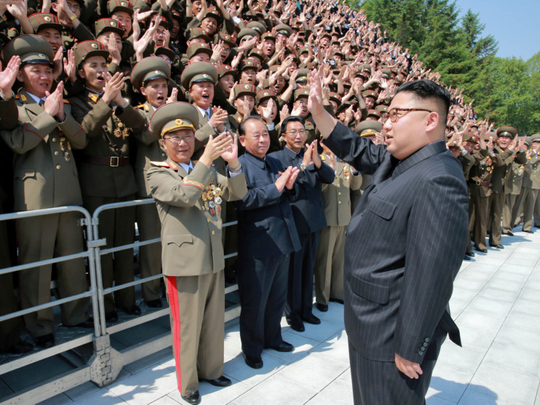
Last Sunday, North Korea successfully demonstrated for the first time that it could strike United States territory in the Pacific. After more than 25 years of wrestling with the North Korean nuclear threat, it’s time to recognise that North Korea is not merely seeking to gain bargaining leverage against America. Rather, it is determined to possess nuclear weapons, and we need to develop a realistic strategy for containing, defending against and deterring what will be a persistent and growing nuclear threat.
There’s every reason to continue pursuing sanctions and diplomacy, but America should not premise its policy on the expectation that such efforts are going to succeed in persuading North Korea to change course. Washington must also recognise that there is no acceptable military solution to the problem.
Even before the North produced its first nuclear weapon, the US calculated that the potential cost for any military strike was too great for America and South Korea. Now that North Korea has nuclear weapons, as well as missiles that can reach Guam and beyond, this logic is even more compelling.
It is indeed true, as the Trump administration has concluded, that China has the wherewithal to compel North Korea to abandon its nuclear weapons. But China is a great power that has had plenty of time to think through its policy. It is concerned, but clearly not panicked. In the absence of good military options or a Chinese deus ex machina (an unexpected power saving a seemingly hopeless situation), the remaining options for eliminating the threat are limited. America has tried them all, and all have failed. Former US president Bill Clinton pursued engagement, which lasted until North Korea was caught cheating on its commitments to US. Another former president George W. Bush switched to confrontation, until North Korea tested its first nuclear weapon. Then he reverted to engagement, but Barack Obama found the results so disappointing that he shifted to ignoring the problem (or, as his administration called it, “strategic patience”).
The Trump administration can pick any of these options, but there’s no reason to expect different results. North Korea has repeatedly demonstrated that it can withstand sanctions and that it will pocket whatever inducements it is offered without abandoning its nuclear weapons programme.
It’s time to take North Korea’s words and actions at face value: North Korea is a nuclear-armed state and is determined to remain one. The deployment of the Terminal High Altitude Area Defence, or Thaad, missile defence system to South Korea is a welcome first step to contain the threat, allowing America to shoot down short and intermediate-range missiles fired from North Korea.
As North Korean missile capabilities grow, Thaad needs to be augmented with more robust missile defence systems, including the ship-borne Aegis system, the Aegis Ashore system now being deployed in Romania, expanded interceptor capabilities in Alaska and the corresponding sensors necessary to maximise the effectiveness of all these systems.
But purely defensive systems will not suffice in deterring North Korea. America needs new offensive capabilities that match North Korea’s. For starters, because of US pressure, the range of South Korea’s ballistic missiles has been limited by mutual agreement since 1979. Such limitations make no sense in the face of North Korea’s growing missile threat and should be lifted immediately.
At the same time, additional offensive strike options need to be made available to America’s allies in the region, including long-range strike aircraft, aerial refuelling capabilities and precision-guided munitions.
The US should be prepared to return its own tactical nuclear weapons to the Korean Peninsula. The withdrawal of those weapons was announced by former president George H.W. Bush in 1991 as North and South Korea were finalising an agreement to denuclearise the peninsula. But North Korea has never respected that agreement, so America need not defer to it, either.
None of these ideas represent a preferred response to the North Korean nuclear threat. They are, instead, a last recourse. But the past quarter-century teaches that America has no realistic alternatives.
— Washington Post
Stephen Rademaker, a principal with the Podesta Group, was a US assistant secretary of state responsible for arms control and non-proliferation from 2002 to 2006.











